America’s Best Suburbs for Growing Families

Anticipating the needs of a growing family is almost impossible to predict with any degree of certainty. It's not easy to know what your children are going to need the most as they grow older. In some cases, you might not even know how many children you'll end up having. That's why it's so important to choose a home that allows for some flexibility. Suburbs with lower costs of living, inexpensive housing and low crime can offer a lot to families of all sizes — including more options to adjust your plans as needed when life starts throwing curveballs.
Compare: The Most Expensive Suburbs in Every State
Living: 17 Best Suburbs With Mortgages Under $1,000 a Month
GOBankingRates has set out to identify the top suburbs in the country for growing families. Beginning with a list of more than 1,200 suburbs located near major cities, the study then gathered data such as violent and property crime rates, the percentage of households with children, median list prices for homes and the basic cost of living in the area. After scoring each category, the study identifies places that are most likely to be a good fit for you and your young family.
Last updated: Sept. 10, 2021
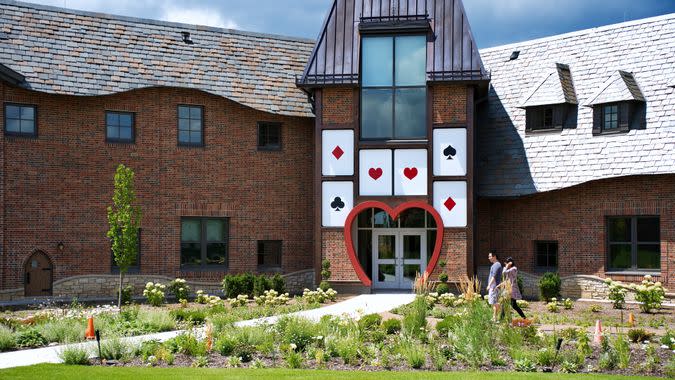
50. Verona, Wisconsin
Metro area: Madison
Located near the college town of Madison, Verona is tied with three other suburbs on this list for the lowest estimated annual grocery costs. Verona clearly has a lot of appeal for young families — its five-year growth in married family households is the highest in the study.
Read: 50 Cities Where It’s Cheaper To Buy a Home Than Rent

49. Lakeville, Minnesota
Metro area: Minneapolis-St. Paul-Bloomington
While Minnesota winters can be harsh, if your clan likes the snow then Lakeville might be a good fit for your family. The town’s estimated annual healthcare costs are about $5,000, putting it among the most affordable in the study in that category.
Related: 20 Best Suburbs for Retirees

48. Corinth, Texas
Metro area: Dallas-Fort Worth-Arlington
The Dallas suburb of Corinth has a median home price of $173,500 — the second-lowest cost for an average home in the study.
Pictured: Dallas, Texas
Learn: Unplug These Appliances That Hike Up Your Electricity Bill
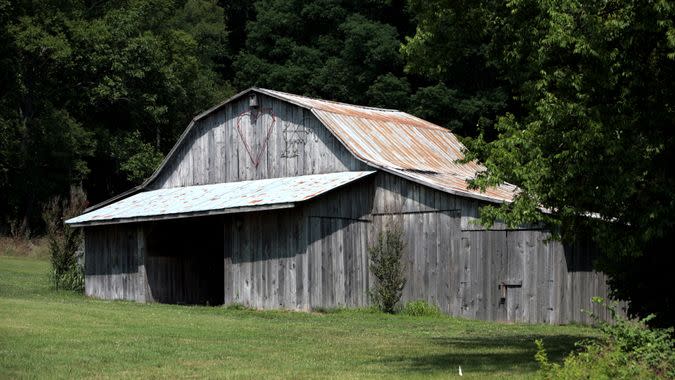
47. Brentwood, Tennessee
Metro area: Nashville-Davidson-Murfreesboro-Franklin
Nearly half of the households in Brentwood have children under the age of 18, so it's a popular spot for families. The town's average grocery costs are almost 10% below the national average.

46. Carmel, Indiana
Metro area: Indianapolis-Carmel-Anderson
Carmel is a good destination for families on a tight budget. The town's cost of housing, excluding essentials, is the second-lowest in the study.
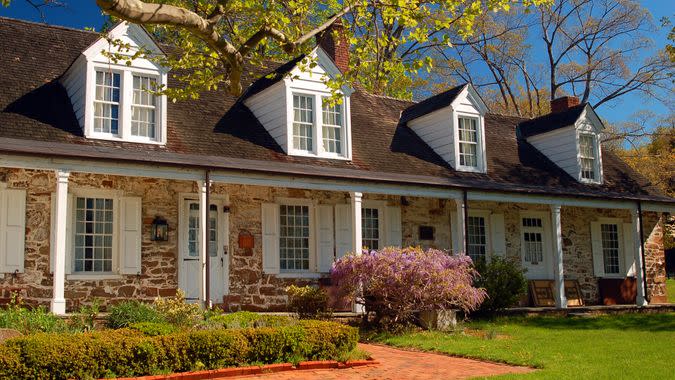
45. Oakland, New Jersey
Metro area: New York-Newark-Jersey City
Located within commuting distance of the Big Apple, Oakland has comparatively low rates of violent and property crimes.
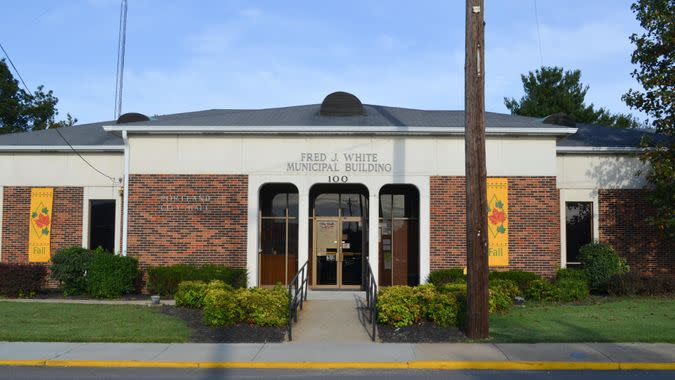
44. Portland, Tennessee
Metro area: Nashville-Davidson-Murfreesboro-Franklin
Mention "Portland" and you might think of the city in Oregon first and the one in Maine next. This Portland, located in suburban Nashville, is an inviting destination for families because the typical cost of groceries is roughly 10% below the national average.
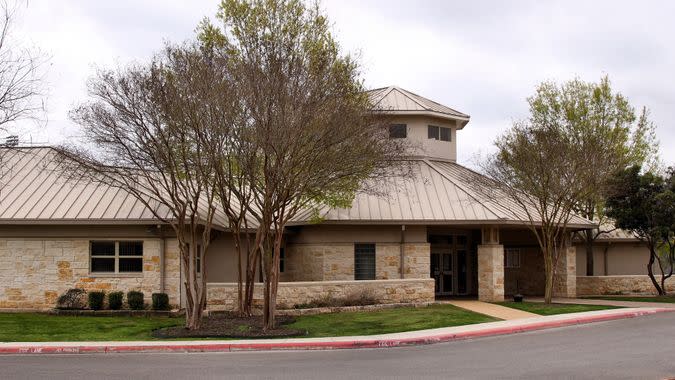
43. Cibolo, Texas
Metro area: San Antonio-New Braunfels
More than half of the households in Cibolo have children, making it a popular spot to raise families. It's also pretty cheap, with the lowest average grocery costs in the study.
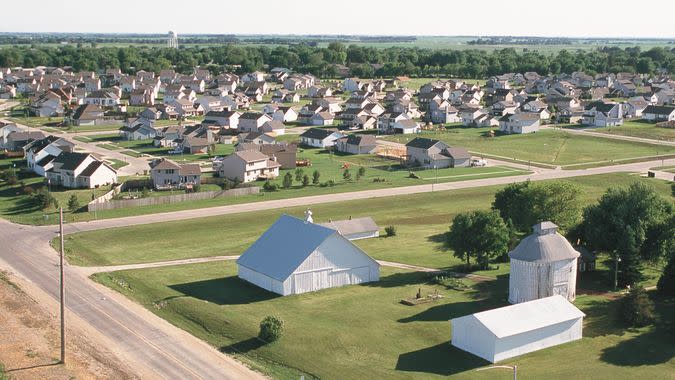
42. Clive, Iowa
Metro area: Des Moines-West Des Moines
This suburb of Des Moines boasts the lowest average transportation costs of any of the burgs on this list. That’s one reason it also has low overall costs for non-housing necessities.
How Much?: The Cost To Own a 3-Bedroom Home in Every State
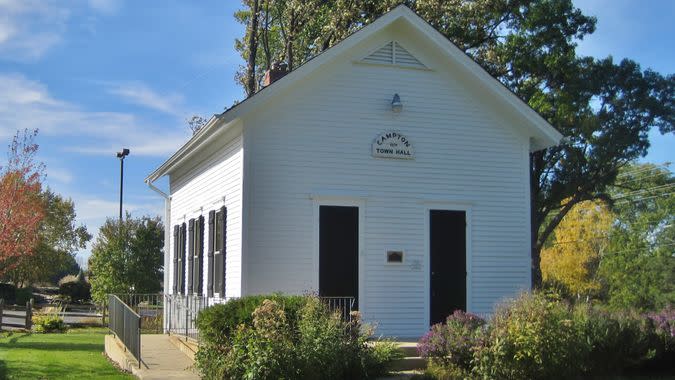
41. Campton Hills, Illinois
Metro area: Chicago-Naperville-Elgin
This Chicago suburb has one pretty incredible thing going for it: it has no violent crime, according to Neighborhood Scout. Since you can't get lower than zero, Campton Hills has the lowest violent crime rate in the study. Not surprisingly, it also has the lowest property crime rate.
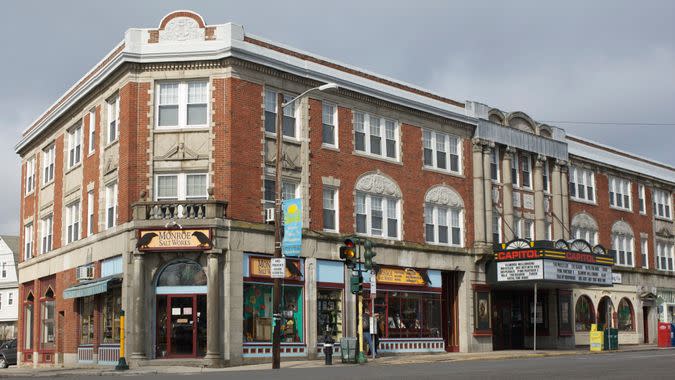
40. Arlington, Massachusetts
Metro area: Boston-Cambridge-Newton
Only three other suburbs on the list have lower average annual healthcare costs than Arlington, where these costs come in just shy of $5,000 a year.

39. Perrysburg, Ohio
Metro area: Toledo
Located on the border with Michigan, Perrysburg is one of the study's top performers in terms of overall affordability. It boasts the second-lowest costs for non-housing necessities.
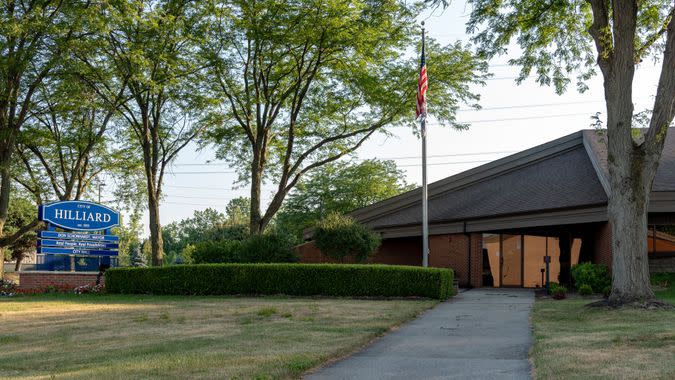
38. Hilliard, Ohio
Metro area: Columbus
Hilliard's stand-out category is its low average healthcare costs, which add up to about 10% of the national average.

37. Bothell, Washington
Metro area: Seattle-Tacoma-Bellevue
Despite being located near pricey Seattle, Bothell is tied for the lowest average annual healthcare costs in the study while also boasting the second-lowest average annual utilities costs. It has comparatively low property crime rates as well, at only 27.67 incidents per 1,000 people.

36. Summit, New Jersey
Metro area: New York-Newark-Jersey City
Almost 60% of married households in Summit have children under 18, but those families are paying a premium to live there. The median list price for a home is just a dollar shy of $1 million.
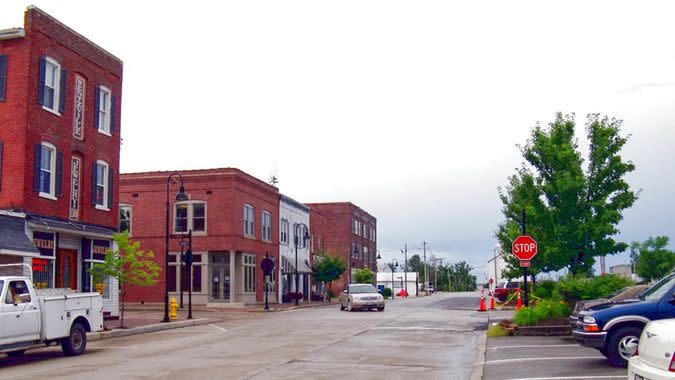
35. Wentzville, Missouri
Metro area: St. Louis
The median list price for homes in Wentzville is $278,900, making it one of the more affordable housing markets in the study.

34. Milton, Massachusetts
Metro area: Boston-Cambridge-Newton
Milton's median home price comes in under $250,000, making it a much more affordable choice than nearby Boston. What's more, Milton's average healthcare costs are relatively low at about 15% below the national average.
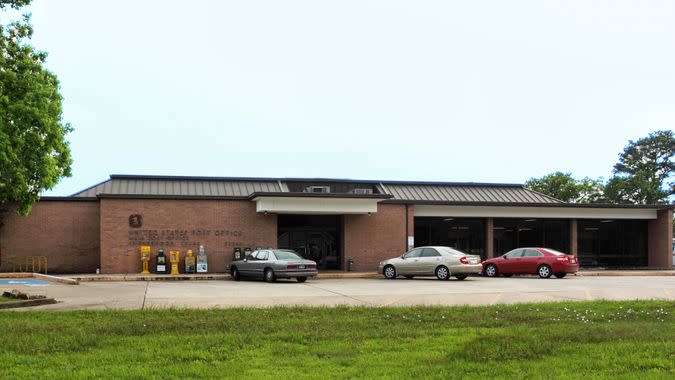
33. Friendswood, Texas
Metro area: Houston-The Woodlands-Sugar Land
Philadelphia might be the "City of Brotherly Love," but with a name like Friendswood, you have to expect this Houston suburb scores pretty high on the cordiality index. With average non-housing necessities costing less than $25,000 a year, Friendswood is also an affordable place to live.

32. Avon, Ohio
Metro area: Cleveland-Elyria
Avon's low average costs for healthcare and transportation are a big reason it has among the lowest yearly costs of non-housing necessities on the list.
Make Money: 28 House-Flipping Rules You Should Never Break
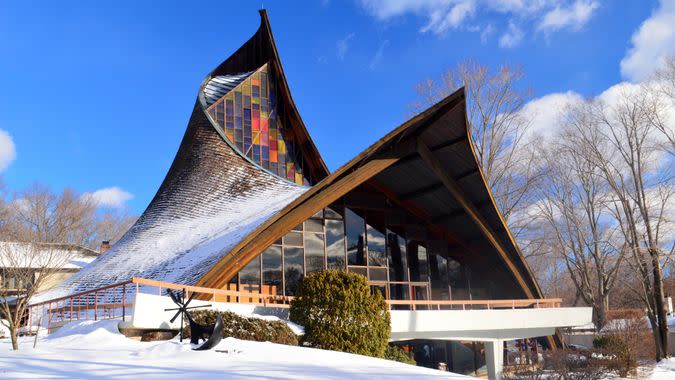
31. Darien, Connecticut
Metro area: Bridgeport-Stamford-Norwalk
Darien's microscopic violent crime rate — just 0.14 per 1,000 people — is the second-lowest in the study. That helps explain why more than half of all households and 60% of married households here have children under 18.

30. Redmond, Washington
Metro area: Seattle-Tacoma-Bellevue
The home to Microsoft's headquarters has the second-lowest average cost of utilities in the study, at around 30% below the national average. Redmond is also tied for the lowest average healthcare costs at about 20% below the national average.
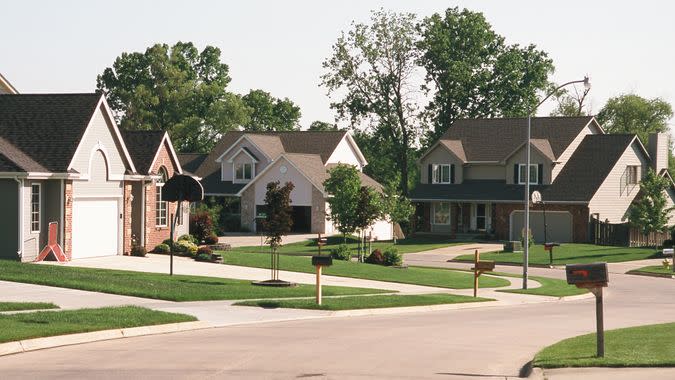
29. Urbandale, Iowa
Metro area: Des Moines-West Des Moines
Only one city in the study can claim lower average annual costs for transportation than Urbandale, where the typical resident pays just $5,762.90 a year to get around.
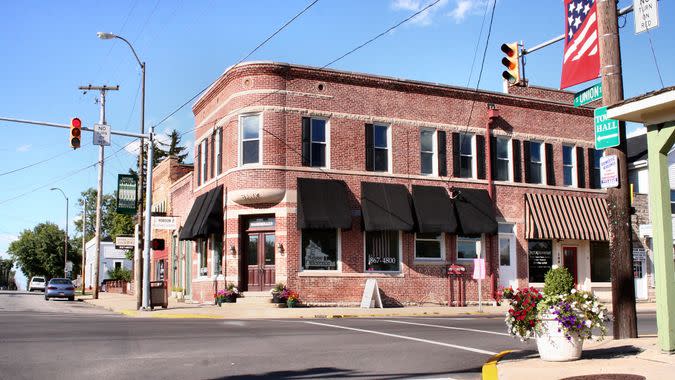
28. Westfield, Indiana
Metro area: Indianapolis-Carmel-Anderson
Westfield is one place where you can count on low costs of living. Its average annual healthcare costs come to just above $5,000 — among the lowest in the study. It also has a low median home price of $229,900.
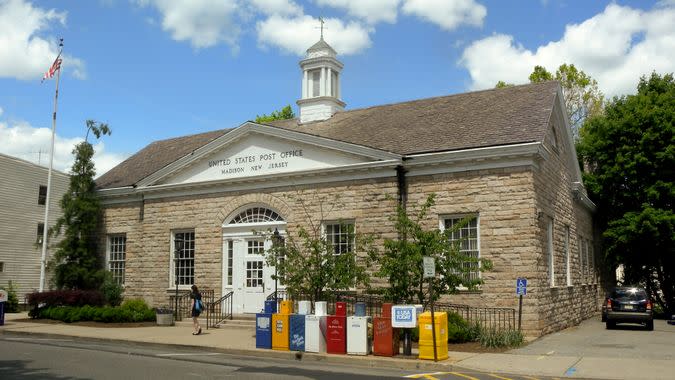
27. Madison, New Jersey
Metro area: New York-Newark-Jersey City
While the cost of living in this New York City suburb is fairly high, Madison has relatively affordable homes and low rates of property and violent crime.

26. Alamo, California
Metro area: San Francisco-Oakland-Hayward
Alamo is located near ultra-expensive San Francisco, but it has the study's lowest median list price for a home at only $150,000. It also boasts very low rates of violent and property crime.

25. Vestavia Hills, Alabama
Metro area: Birmingham-Hoover
Low costs for groceries and transportation in this Alabama burg help keep the annual cost of non-housing necessities under $25,000.

24. Norwalk, Iowa
Metro area: Des Moines-West Des Moines
Norwalk is another suburb of Des Moines that boasts low average costs for transportation, coming in at just over $6,000 a year, or about 10% below the national average.
Pictured: Des Moines, Iowa

23. Novi, Michigan
Metro area: Detroit-Warren-Dearborn
This southeast Michigan suburb is one of only five in the study where the average annual cost for healthcare comes in under $5,000 a year.

22. Sammamish, Washington
Metro area: Seattle-Tacoma-Bellevue
The median list price for a home in Sammamish is over $1 million — which helps explain why there's actually a negative growth rate for families. If you can cover your mortgage, however, you can expect some of the lowest average costs for healthcare and utilities of any suburb on this list.
Real Estate: 8 Insider Tips to Get Rich in Real Estate

21. Stallings, North Carolina
Metro area: Charlotte-Concord-Gastonia
If you're looking for a suburb where your growing family can be part of a growing community, you should (ahem) not delay your move to Stallings. The town's growth rates for households with families and married households with families are the highest and second-highest in the study, respectively.
Pictured: Charlotte, North Carolina
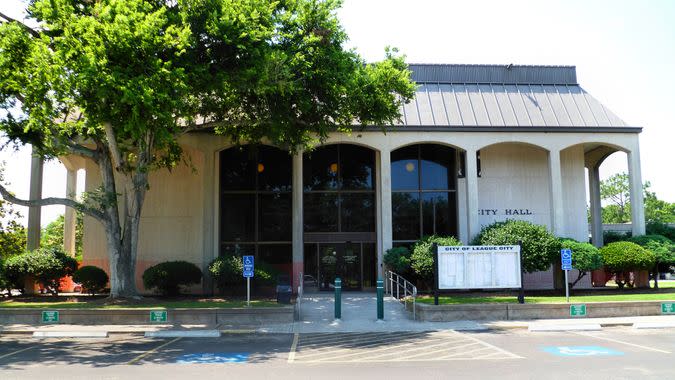
20. League City, Texas
Metro area: Houston-The Woodlands-Sugar Land
With a median list price for homes of just under $300,000 and an annual cost of non-housing necessities below $25,000, League City offers affordability in one of the nation's biggest metro areas.
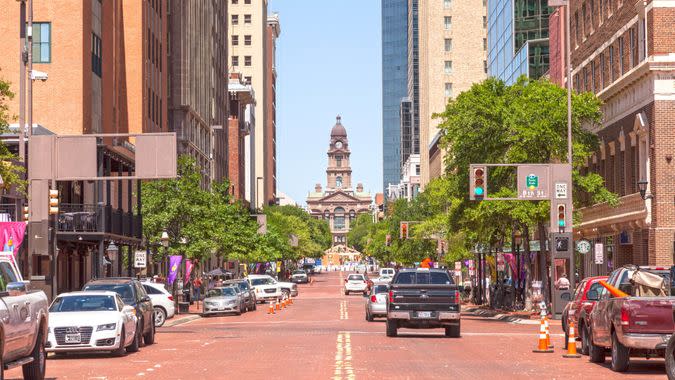
19. Little Elm, Texas
Metro area: Dallas-Fort Worth-Arlington
While the percentage of Little Elm homes with children is on the decline, they still constitute more than half of total households and over 60% of married households.
Pictured: Fort Worth, Texas
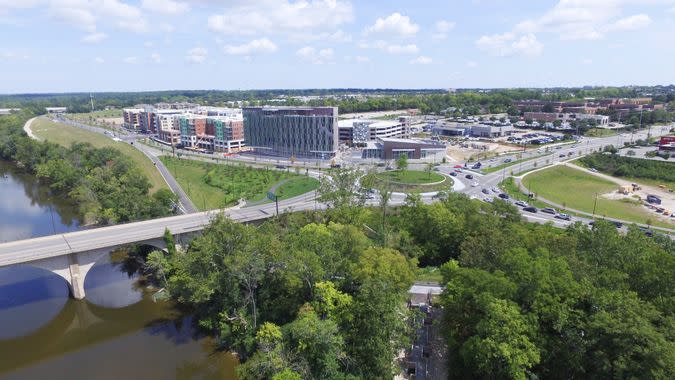
18. Dublin, Ohio
Metro area: Columbus
The typical Dublin resident spends around 10% less on annual healthcare costs than the average American, helping them keep non-housing necessities below $25,000 a year.

17. Morrisville, North Carolina
Metro area: Raleigh
Roughly two-thirds of Morrisville's married households have children under the age of 18, one of the higher percentages in the study.
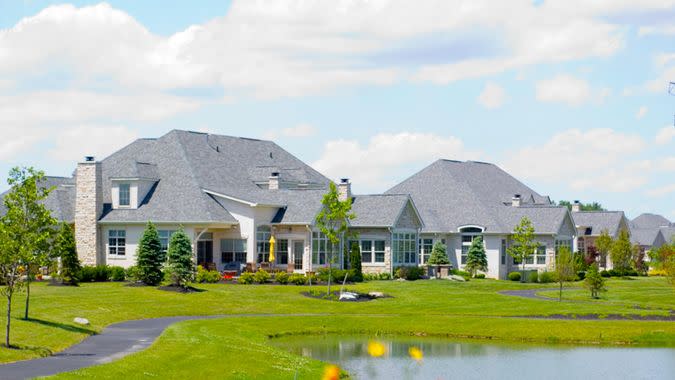
16. Powell, Ohio
Metro area: Columbus
Powell's low costs for healthcare — at 8% below the national average — help keep its expected annual cost of non-housing necessities below $25,000.
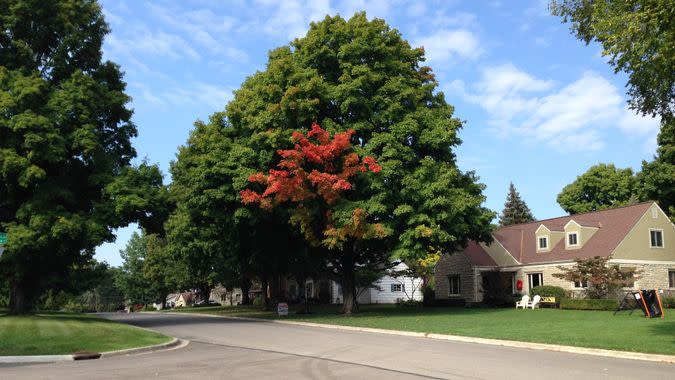
15. Upper Arlington, Ohio
Metro area: Columbus
At $6,820 a year, the average transportation costs for Upper Arlington are exactly the same as the national average. However, given that suburbs are all near major urban centers, the national average is actually relatively low for this study.
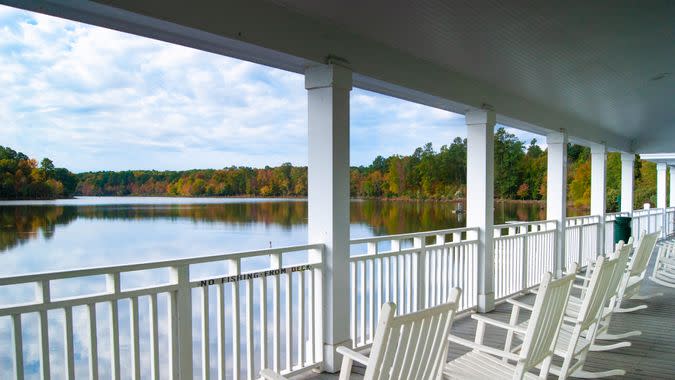
14. Holly Springs, North Carolina
Metro area: Raleigh
More than two-thirds of married couples living in Holly Springs have children under the age of 18 in their households. That's the third-highest rate of any suburb in the study.
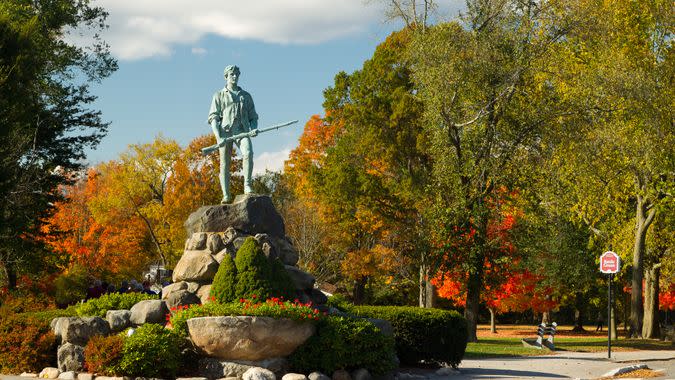
13. Lexington, Massachusetts
Metro area: Boston-Cambridge-Newton
This Boston suburb is one of five towns on the study where the average annual healthcare costs are below $5,000 a year, with Lexington tied for the second-lowest costs in the category.
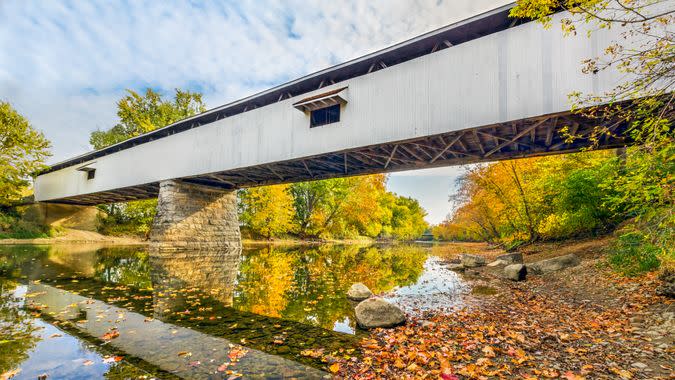
12. Noblesville, Indiana
Metro area: Indianapolis-Carmel-Anderson
Noblesville's median list price for a home is an affordable $289,900, giving families more money to spend on other things.
Your Home: 17 Dumb Home-Buying Mistakes That Hurt Your Wallet
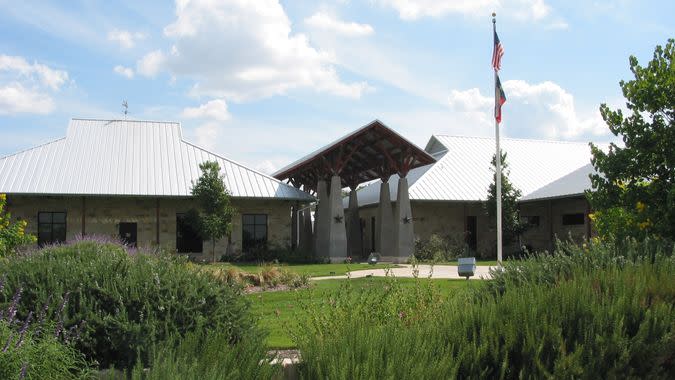
11. Leander, Texas
Metro area: Austin-Round Rock
With expected annual grocery costs of $5,870.17, Leander is part of a three-way tie for the lowest costs in this category.
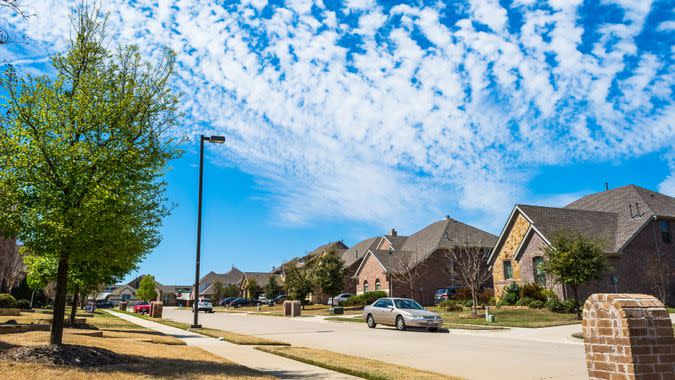
10. Allen, Texas
Metro area: Dallas-Fort Worth-Arlington
Allen has higher overall costs than many other suburbs in this study, but it still boasts an average yearly cost for non-housing essentials below $25,000.

9. San Ramon, California
Metro area: San Francisco-Oakland-Hayward
The median list price for a home in San Ramon is just shy of a cool $1 million, but that doesn't seem to be driving away families. Around 65% of married households there have children.
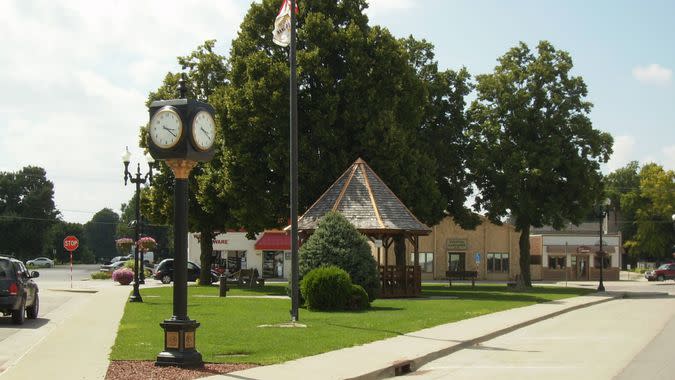
8. Waukee, Iowa
Metro area: Des Moines-West Des Moines
While nearly $300,000 might seem like a high median list price for a home in Iowa, you'll save money on low transportation costs because suburban Des Moines is one of the cheapest places on this list to get around.
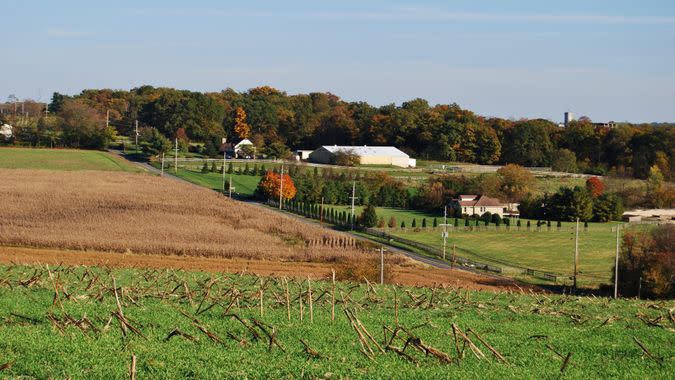
7. Clarksburg, Maryland
Metro area: Washington-Arlington-Alexandria
If you want to take cues from the crowd on the best place to raise a family, Clarksburg could be your pick. It has the highest percentage of family households with children on the list, at 71.81%.

6. Bellevue, Nebraska
Metro area: Omaha-Council Bluffs
The median list price for a home in Bellevue is a steal at just under $220,000. You can also expect to pay annual grocery costs that are about 7% cheaper compared to the rest of the nation, along with yearly transportation expenses that fall slightly below the national average.

5. Murphy, Texas
Metro area: Dallas-Fort Worth-Arlington
Murphy has the second-highest proportion of family households with children in the study, at 67.1%, making it a popular place to raise kids.
Pictured: Dallas, Texas
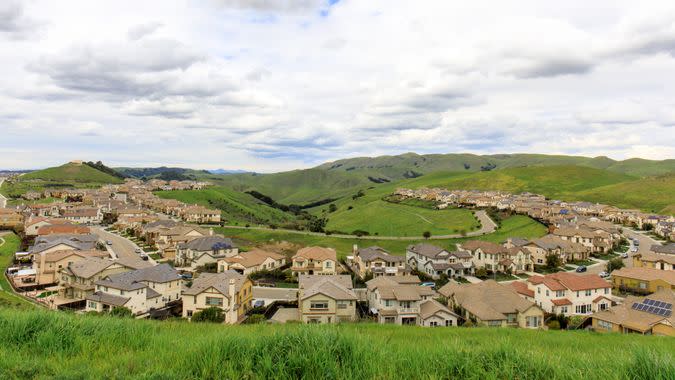
4. Dublin, California
Metro area: San Francisco-Oakland-Hayward
The second Dublin in this study is located in the Bay Area, so its median list home price of about $450,000 could actually be looked at as cheap, given the location. Dublin is attracting more families, with the number of households with children growing more than 7% over the past half-decade.
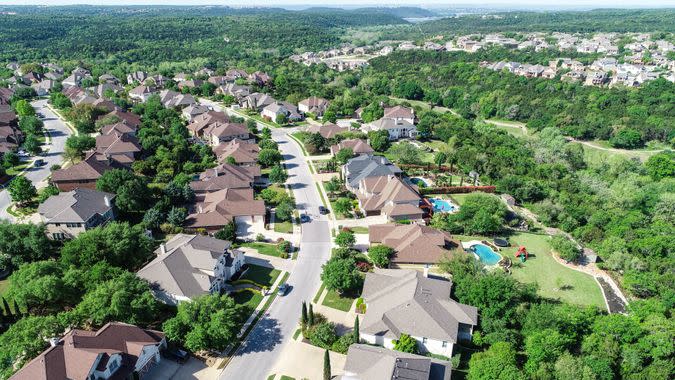
3. Cedar Park, Texas
Metro area: Austin-Round Rock
This suburb just outside of Austin, Texas, is a part of the Leander Independent School District, which Niche ranks as one of the best school districts in Texas. On top of that, grocery costs are among the lowest of all the suburbs in this study.
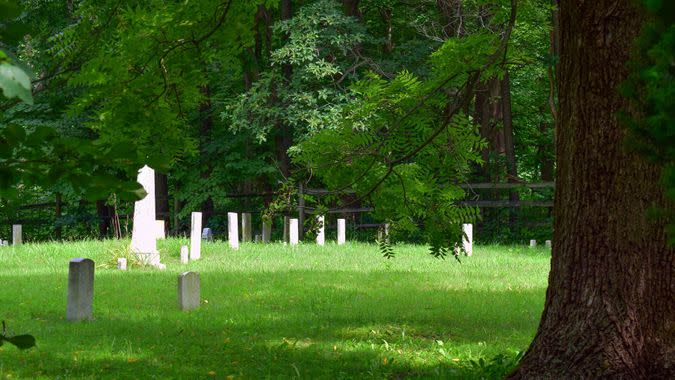
2. Fishers, Indiana
Metro area: Indianapolis-Carmel-Anderson
Fishers nabs the No. 2 spot overall because of its low healthcare costs and high percentage of married households with children.

1. Kirkland, Washington
Metro area: Seattle-Tacoma-Bellevue
Kirkland is the top suburb for growing families on the list, driven in part by the lowest average annual healthcare and utilities costs in the study. Despite its advantages, the town clearly hasn't caught on with parents yet. It has the second-lowest percentage of married households with children on the list, at 41.7%.
More From GOBankingRates
What Money Topics Do You Want Covered: Ask the Financially Savvy Female
Nominate Your Favorite Small Business To Be Featured on GOBankingRates
Methodology: The list of suburbs comes from a previous GOBankingRates study, Every State's Best Suburb, published on Aug. 7, 2019. All suburbs are within 45 miles of the principal city in terms of driving distance, per Google Maps. To determine the best one for growing families, GOBankingRates evaluated these suburbs along the following criteria: (1) violent crime rate per 1,000 residents and (2) property crime rate per 1,000 residents, both sourced from Neighborhood Scout; (3) median home list price, sourced from Zillow’s July 2019 index; (4) annual cost-of-living expenditures, based on the Bureau of Labor Statistics’ 2017-18 Consumer Expenditure Survey, with local cost-of-living indices sourced from Sperling’s Best Places; (5) number of households with children under 18, (6) percentage of households with children under 18, (7) number of married-couple families with children under 18, (8) percentage of married-couple families with children under 18, all sourced from the Census Bureau's 2017 American Community Survey; (9) five-year change in the number of households with children under 18, (10) five-year change in the percentage of households with children under 18, (11) five-year change in the number of married-couple families with children under 18, (12) five-year change in the percentage of married-couple families with children under 18, (13) school district score, based on Niche’s Best School Districts index. Each school district had an alphabetical grade, ranging from A-plus through F, that was converted to a numerical value in order to score. All these factors were scored, summed up and then ranked from best to worst for each metropolitan statistical area in all 50 states. All data accurate as of Aug. 27, 2019.
This article originally appeared on GOBankingRates.com: America’s Best Suburbs for Growing Families
